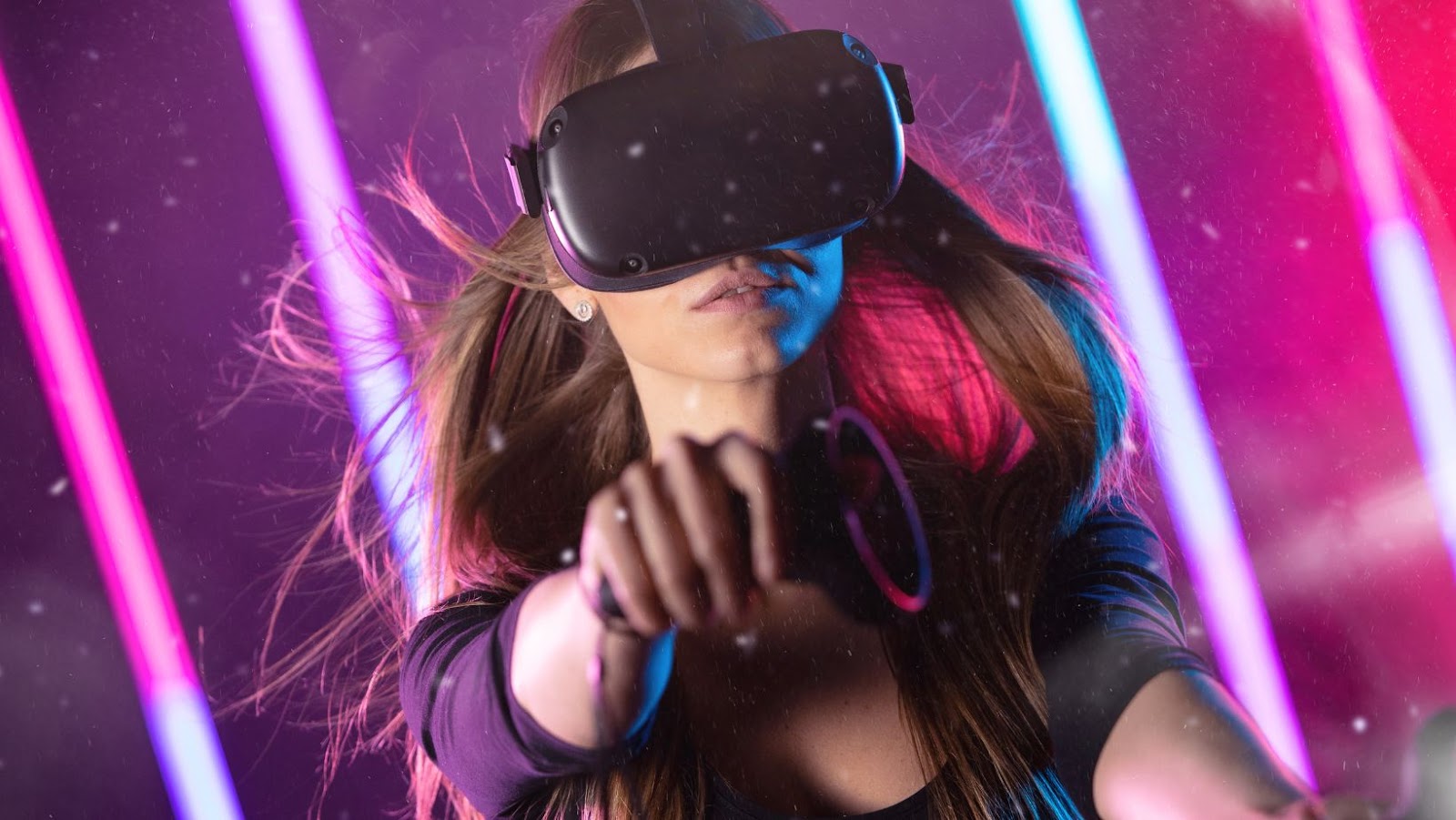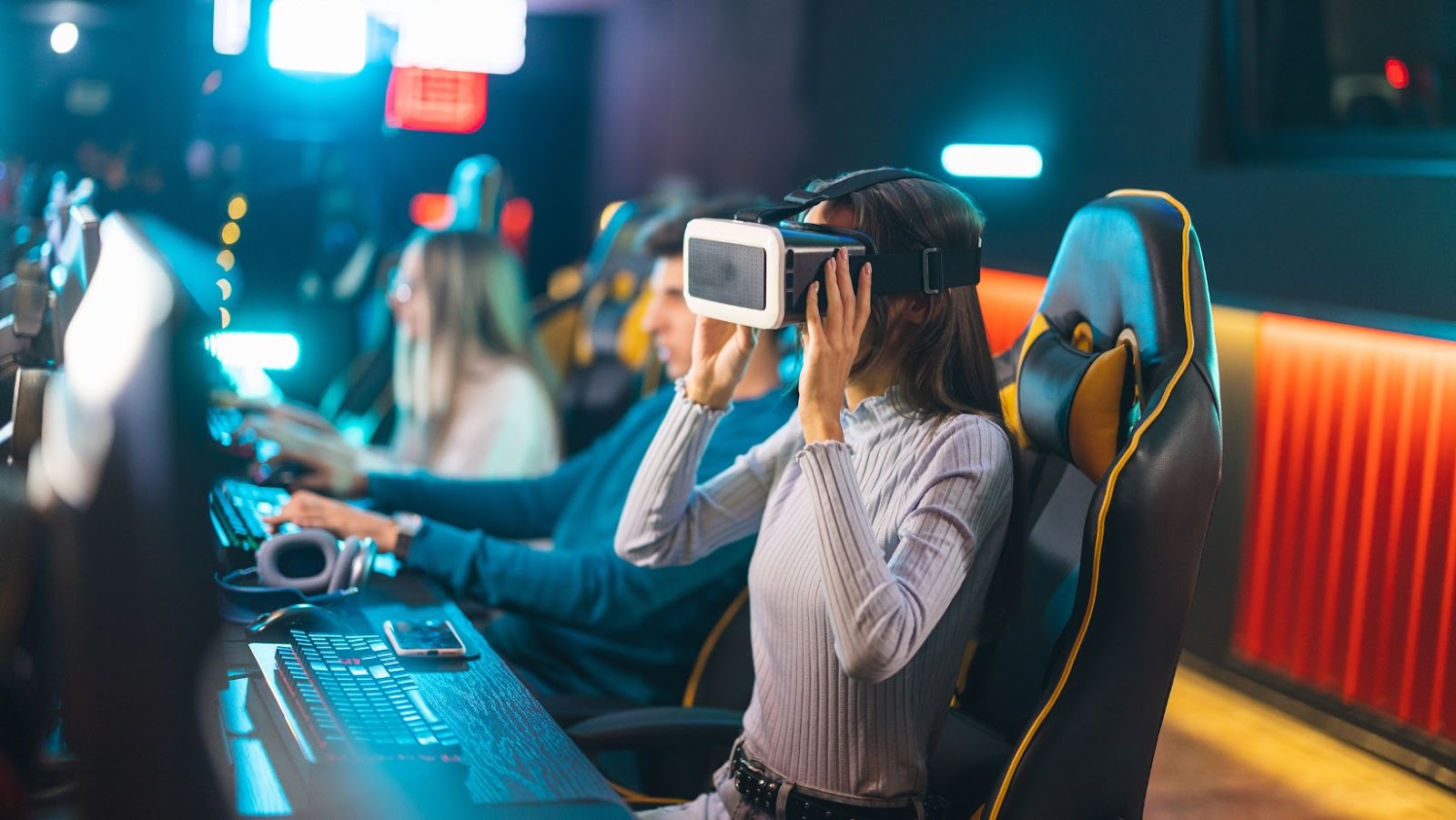 Virtual Reality Demo
Virtual Reality Demo
Virtual reality (VR) allows users to experience digital environments as if physically present. This technology uses headsets, controllers, and motion tracking to create immersive experiences. VR spans various applications, including gaming, education, and professional training.
Key Components Of VR
- Headsets: Devices like Oculus Rift, HTC Vive, and PlayStation VR that display 3D environments.
- Controllers: Input devices such as handheld controllers, gloves, and motion trackers.
- Software: Programs that create the virtual world and manage user interactions.
Applications Of VR
- Gaming: Enhancing player immersion and interactivity in titles like Beat Saber and Half-Life: Alyx.
- Education: Enabling virtual classrooms and field trips, exemplified by platforms like Google Expeditions.
- Training: Offering realistic simulations for medical procedures, flight training, and military exercises.
- Immersion: Users engage deeply with virtual environments, increasing effectiveness.
- Interactivity: Real-time responses to user actions foster a more engaging experience.
- Versatility: Applicable across diverse fields, from entertainment to professional training.
With these elements, virtual reality transforms how individuals engage with digital content, providing more authentic and interactive experiences than traditional media.
 Key Features Of A Virtual Reality Demo
Key Features Of A Virtual Reality Demo
A virtual reality demo offers distinct features that showcase the technology’s potential to create immersive, interactive, and visually stunning digital experiences.
VR demos offer an immersive experience that places users within a fully synthetic environment. They allow individuals to feel present in a virtual world by engaging multiple senses. Headsets like Oculus Rift and HTC Vive provide high-resolution visuals and spatial audio. Motion tracking and haptic feedback enhance the sensory input, adding to the user’s sense of immersion.
The interactivity in VR demos is pivotal in engaging users. Controllers and motion sensors enable users to manipulate objects, navigate environments, and receive real-time responses. For example, in a virtual classroom, learners can interact with 3D models. In gaming, users can perform actions such as picking up items or engaging in simulated combat, making the experience more engaging than passive viewing.
Visual quality plays a significant role in the effectiveness of a VR demo. High-resolution displays, along with advanced graphics processing, create realistic and detailed environments. Features like field of view and frame rate contribute to the visual smoothness. Demos that employ photorealistic textures and dynamic lighting offer visually rich experiences, making virtual worlds appear more lifelike and engaging.
 Popular Virtual Reality Demo Applications
Popular Virtual Reality Demo Applications
Virtual reality demos showcase the breadth of VR’s capabilities across a range of fields. This section explores some of the prominent areas where VR demos are making a significant impact.
VR gaming demos let players immerse themselves in digital worlds, offering unparalleled interactivity and engagement. Titles like “Beat Saber” and “Half-Life: Alyx” exemplify how VR transforms gameplay. Players don’t just control characters; they become part of the game’s universe. Enhanced spatial audio and realistic physics increase immersion, setting VR games apart from traditional formats.
In educational settings, VR demos create hands-on learning experiences that foster deeper engagement. Applications like “Google Expeditions” and “VictoryXR” use VR to conduct virtual field trips and interactive lessons. Students can explore ancient ruins, dive into the ocean, or walk through space missions. This method enriches subject comprehension and engagement through experiential learning.
Healthcare VR demos demonstrate immense potential in training and therapy. Programs like “Osso VR” and “Beat Saber Arcade” showcase how VR aids in surgical training and patient rehabilitation. Trainees practice complex procedures in a risk-free environment, improving their skills efficiently. Similarly, VR therapy helps patients manage pain and anxiety by immersing them in calming, controlled virtual environments.
Virtual reality demos have become a pivotal tool in showcasing the immense potential of VR technology across various fields. By offering immersive, interactive experiences, these demos bridge the gap between traditional media and digital environments, making complex concepts more accessible and engaging. As VR technology continues to evolve, the quality and scope of these demos will undoubtedly expand, driving further innovation and adoption. With advancements in realism, interactivity, and accessibility, VR demos are set to revolutionize how we learn, work, and play, promising a future where virtual experiences are seamlessly integrated into our daily lives.